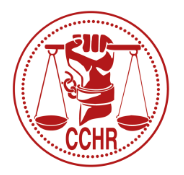Psychiatric treatment as practiced by the infamous Dr. Biederman and Dr. Timothy E. Wilens of Harvard University has done nothing to improve this profession’s ever dwindling credibility.
Gardiner Harris and Benedict Carey state in their NY Times article:
“A world-renowned Harvard child psychiatrist whose work has helped fuel an explosion in the use of powerful antipsychotic medicines in children earned at least $1.6 million in consulting fees from drug makers from 2000 to 2007 but for years did not report much of this income to university officials, according to information given Congressional investigators.”
What makes Dr.Biederman infamous? We have him to thank for the outrageous increase of children placed on harmful psychiatric drugs, in the guise of psychiatric treatment.
“Dr. Biederman is one of the most influential researchers in child psychiatry and is widely admired for focusing the field’s attention on its most troubled young patients. Although many of his studies are small and often financed by drug makers, his work helped to fuel a controversial 40-fold increase from 1994 to 2003 in the diagnosis of pediatric bipolar disorder, which is characterized by severe mood swings, and a rapid rise in the use of antipsychotic medicines in children…”
The Alliance for Human Research Protection, a watchdog for psychiatric ethical misconduct, reports on a case involving Johnson and Johnson (J&J),
“The report [the confidential expert witness report by Dr. David Rothman of Columbia University which documents psychiatrists’ corrupt practices] describes how these prominent psychiatrists developed commercially driven prescribing algorithms [an effective method expressed as a finite list of well-defined instructions for calculating a function] that they helped masquerade as legitimate, science-based medication prescribing guidelines.”
The original report describes the project,
“Dr. Frances negotiated the agreement with J&J (November 9, 1995), to set forth the Schizophrenia Practice Guidelines. The project would employ three questionnaires to establish the guidelines : one went to academic experts, one to clinicians, and one to policy experts. Including the third group was in all likelihood J&J’s idea, as witness the fact, Frances wrote J&J: ‘This is new to us and requires additional discussion. The panel would include mental health commissioners, community mental health directors, pharmacy directors, NAMI representatives, experts in pharmoeconomics, and so forth.’ These were precisely the constituencies that J&J were eager to influence. J&J was the exclusive supporter of the project, dividing an unrestricted grant of $450,000 among the three schools. It further agreed to a $65,000 bonus incentive payment if the team was timely with its product. The team met the requirement, requested the additional payment and received it.”
The Alliance for Human Research Protection further quotes the report,
“‘Not only were Frances, Docherty [Professor and Vice Chairman of Psychiatry, Cornell University], and Kahn [Associate Clinical Professor of Psychiatry, Columbia University] ready to violate standards of conflicts of interest in mixing guideline preparation with marketing for J&J, but also in publicizing the guidelines in coordination with J&J. The three men established Expert Knowledge Systems [EKS]. The purpose of this organization was to use J&J money to market the guidelines and bring financial benefits to Frances, Docherty, and Kahn.’”
NY Times quotes the report:
“‘Indeed from the start J&J had made it apparent to the team that this was a marketing venture.”
Clearly, it is dangerous to allow those with criminal intent to be placed in a position of authority. And when that authority involves recommendation of psychiatric treatment with dangerous drugs, the prospect becomes chilling indeed.
Read full report at http://1boringoldman.com/images/rothman-report-1-20.pdf#page=14


0 Comments